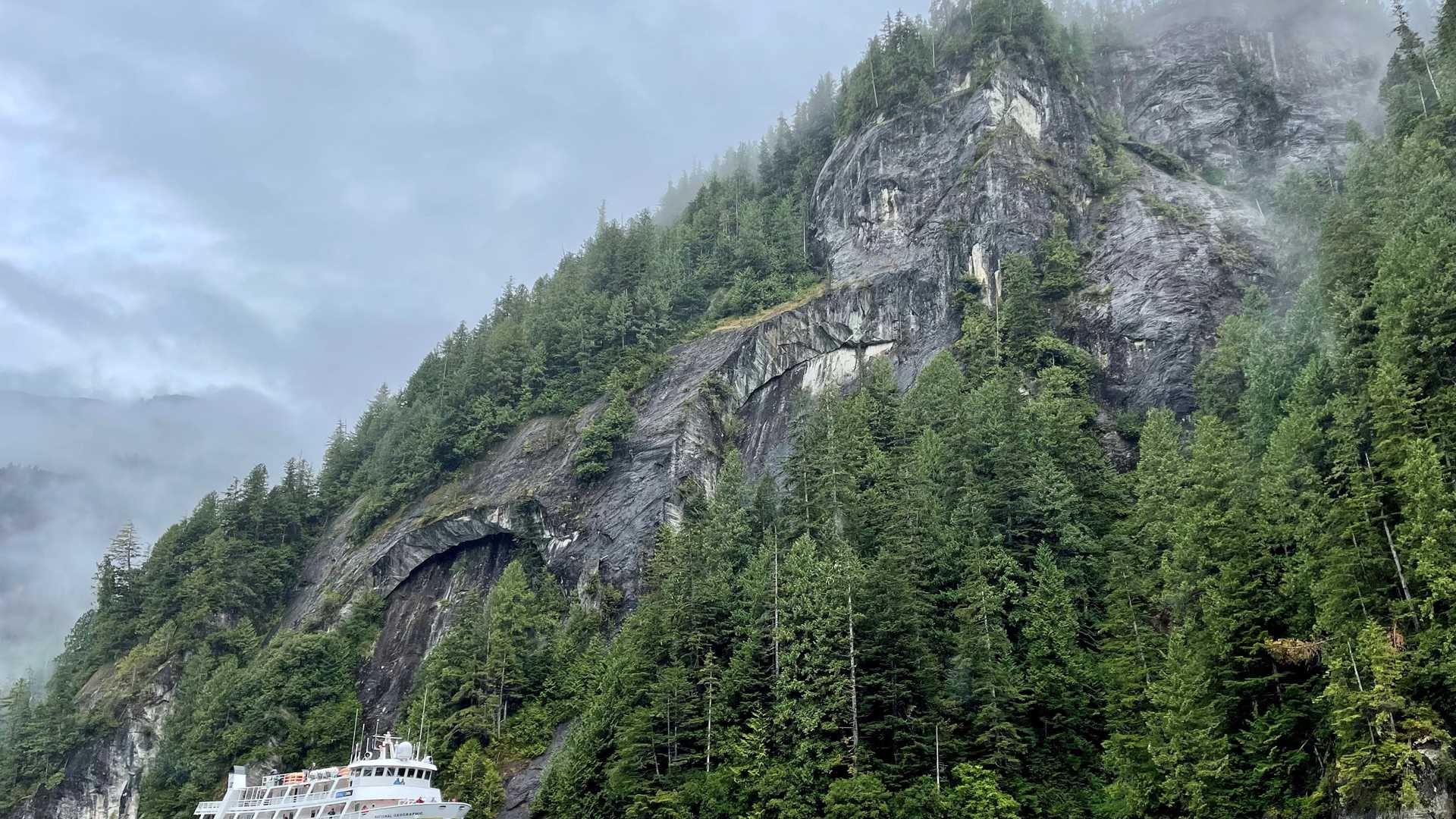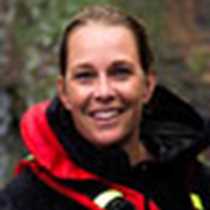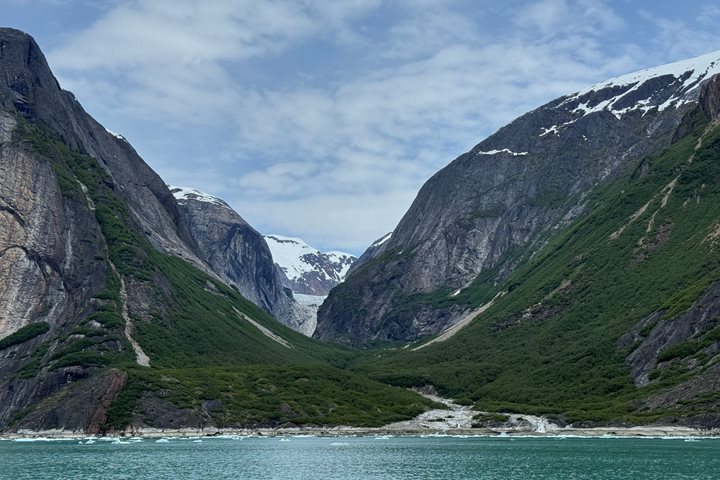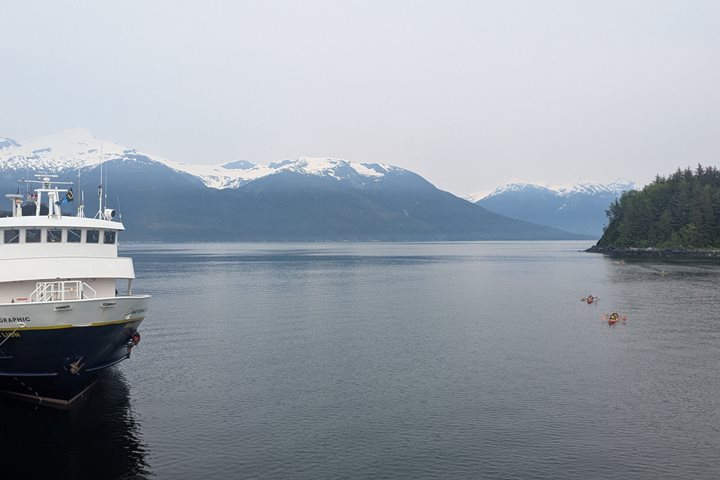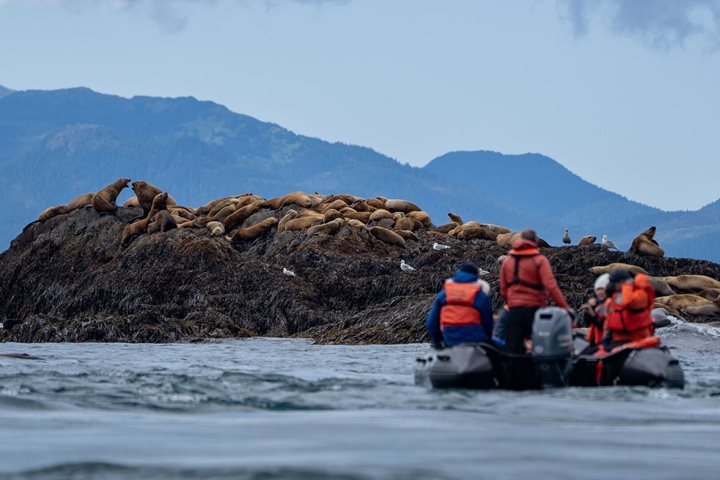The National Geographic Sea Lion sailed under a low ceiling of mist as we entered Misty Fjord National Monument. Our first operation of the day, and of the trip, was a Zodiac cruise through upper Rudyard Bay, or God’s Pocket as it is colloquially known. While the expedition landing crafts explored the steep fjord walls, the ship made its way through the narrow opening of Owl’s Pass. Once inside the bay that marks the end of the fjord, the scenery was breathtaking. Water vapor hung in the air, constantly being resupplied by the light precipitation. The sheer walls rimming the bay are completely covered in vegetation of Sitka spruce, Western hemlock, red and yellow cedar, Sitka alder, and various lichens. This carpet of old growth is lush and almost glows bright green against the hazy sky. This area receives between 140 and 160 inches of rain a year, more than enough water to support centuries-old rainforest. The fauna loves the wet climate as much as the flora. Bald eagles swooped down from lofty trees to scavenge recently spawned humpback salmon deposited on the shore by the falling tide. Harbor seals inched their way out of the water onto exposed rocks beneath cascading waterfalls. If there’s one thing for certain in Southeast Alaska, it’s that it will rain and that is exactly what you want for a stunning day in Misty Fjords.
After a short transit and a delicious lunch, the afternoon activity of kayaking at Punchbowl Cove commenced. The towering granite walls that surround the cove are striking, and a product of intense geologic processes. The granitic rock formed between 50 and 70 million years ago deep within the Earth. The shifting and collision of tectonic plates caused this body of rock to be uplifted and then eroded once exposed at the surface. This uplift, and subsequent weathering relieved the rock of enormous weight and pressure, which resulted in expansion. In some types of granite, this expansion causes a series of cracks or joints. If the joints stand vertically, especially if they run into the rock at right angles to the valley, the rock can stand extremely tall, like the walls of Punchbowl Cove.
Geology and glaciers work together in Alaska to create unbelievable landscapes. Rock is history, the shape of the land has a story. Glaciers then form and edit that story. These colossal rivers of ice shape our planet’s skin. They are the most powerful natural force of erosion on the Earth and leave behind distinct and picturesque landscapes.
Our first day on our Southeast Alaska adventure was the perfect introduction to the Tongass National Forest, to the geology of the region, and some of the wildlife that calls this place home. Looking forward to tomorrow and another busy day of exploring this magical place.

